Every mainstream transportation device these days has its electric equivalent. Bicycles, skateboards, and more have their electric counterparts, so it’s no surprise that an efoil surfboard can now be purchased as efoil board.
But this technology is so new that very few people have actually ever heard of it compared to, say, e-bikes.
How safe are they? How do they even work at an aerodynamic level? Are they just glorified surfboards?
No matter what questions you have about an efoil surfboard, we’ll be sure to answer them in today’s comprehensive article. Everything you could ever hope to learn about hydrofoil electric boards is waiting for you down below.
The “e” in eFoil stands for electric, therefore an eFoil board is an electric foil board.
You still may be left asking yourself – okay, but what is a regular foil board in the first place?
A foil board is like a type of surfboard but has extra components attached to it that have you riding the water in a similar fashion. It’s almost like an airplane but for water. There are front and rear wings that create stabilized pressure that has you hanging over the water like how a plane hangs over the air.
An eFoil board is just like that but is motorized so it has more power and juice behind it.
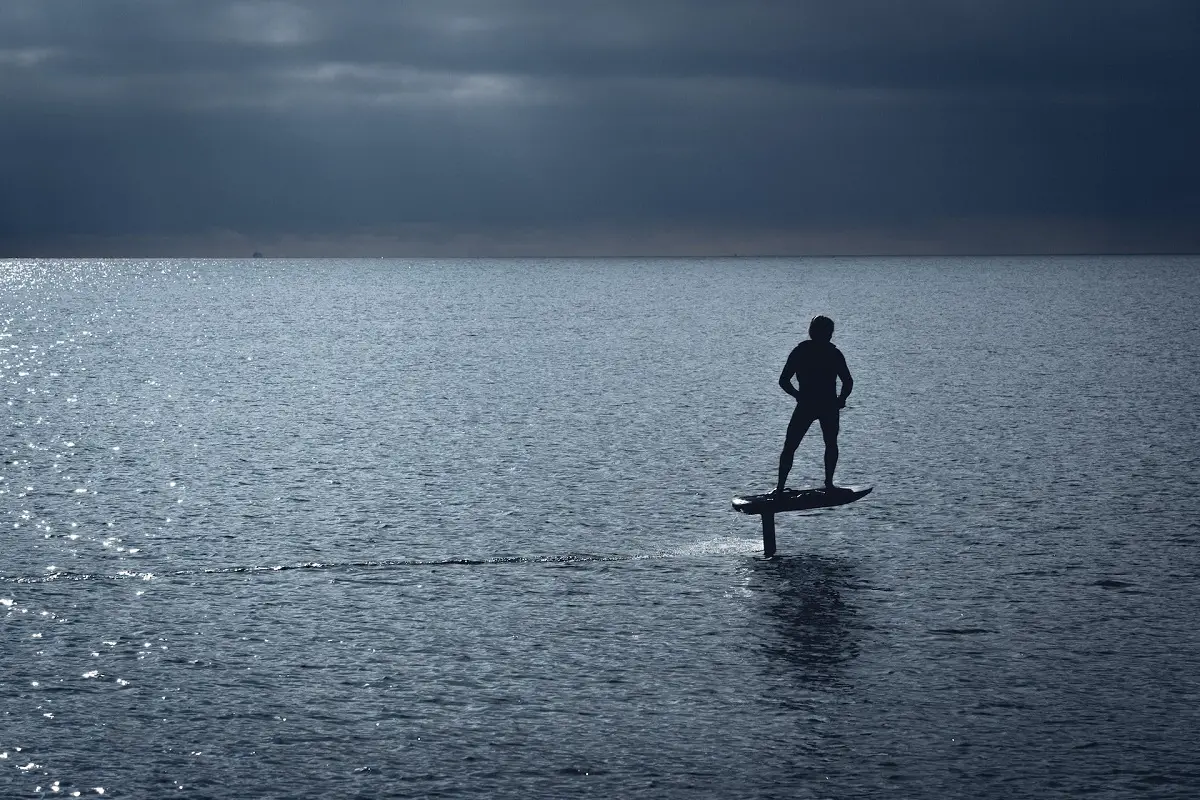
The first thing you will notice about foil surfing is that the board itself doesn’t actually touch the water, as would happen with a traditional surfboard. The defining feature of a foil or efoil surfboard is the stick that connects the main board to the water. This is called hydrofoil.
In regular surfboarding, you ride the board which rides the water. Foil boarding adds one extra step into that with the hydrofoil component. You ride the surfboard, which rides the hydrofoil which then rides the water.
Now, this all sounds cool and exciting, but how does it even work? How can a small stick balance and hold up both a board and a person at such angles and speeds?
To understand how e foiling works, we first have to understand the components that make up this contraption.
As mentioned above, a foil board is a surfboard with a hydrofoil attached to the bottom of it. When watching someone ride one in the waters off in the distance, it looks like a mere stick or shaft. But it’s actually much more complex and has multiple attachments.
A hydrofoil is generally comprised of four main components: the front ring, the back or rear wing, the mast, and the fuselage.
Now that we’ve covered the anatomy of the hydrofoil, it’s time for the technical part: the physics and aerodynamics.
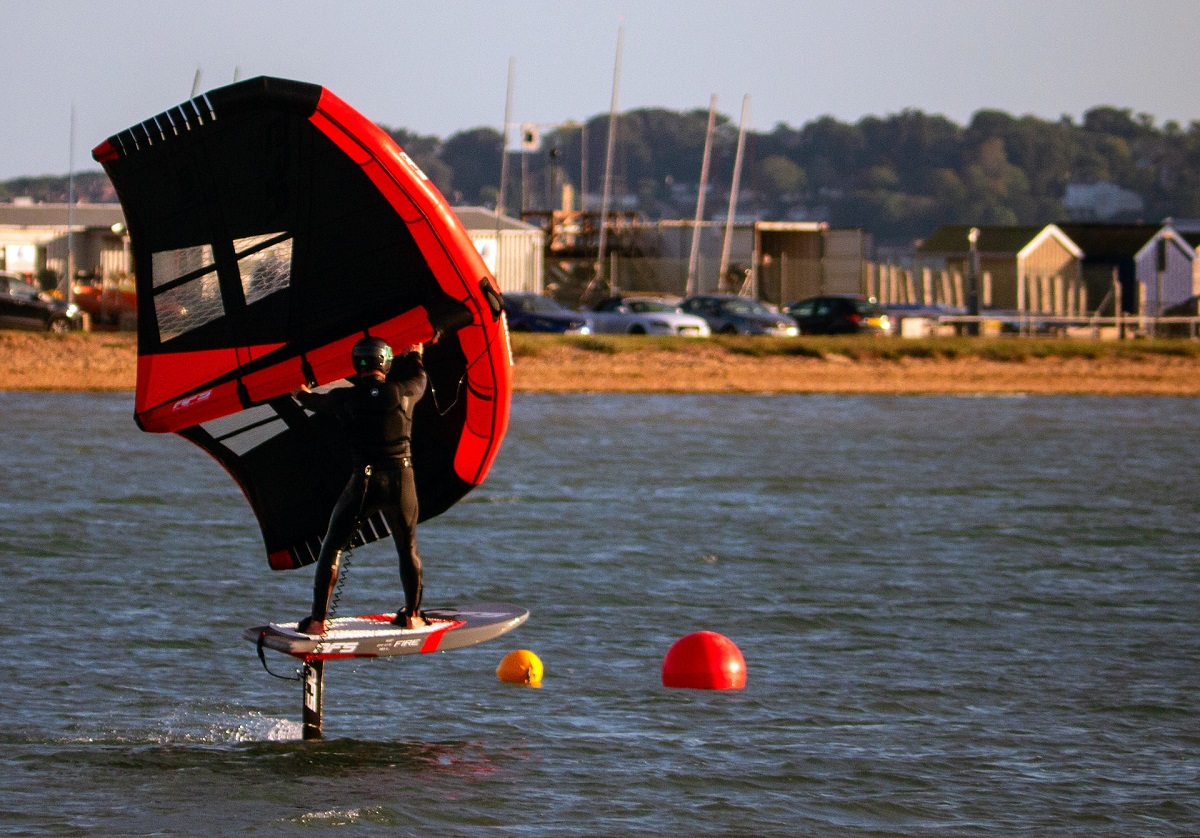
As mentioned before, efoiling works similarly to airplanes from an aerodynamic perspective. E foils stay afloat on water through these properties, and it all begins with the front wing.
The foil’s front wing gets pulled upwards when moving through water. Because the front wing is flat and rounded, it makes the water move past it by pushing the water beneath the wing. This creates a sort of acceleration-causing vacuum which also creates pockets of pressure.
At the end of this process of pressure and pushing, it causes the wing to move upward. And because this process is entirely based on pressure, more speed means more air is gained upward as well.
In other words, this pressure of moving through water and pushing it underneath itself is what causes the board to “lift off” just as a plane would do by pushing through the air instead of water.
Once lift-off has taken place, the rear wing acts as the stabilizer to keep the board afloat without moving too far in any direction to cause a crash or wipeout. It’s like how an airplane’s wings are there to keep it nice it steady. The front wing causes lift, and the rear wing keeps it lifted.
Now that you know how a regular foil board works, you must be wondering how an electric foil surfboard works. Well, the answer is that it works very similarly. The main difference is that two primary components are now added: a battery and a motor.
This will probably come as no surprise to people who know a bit about e-bikes or e-skateboards.
E foiling surfboards and a motorized foil board variant still operate under the same physical and aerodynamic laws as their non-electric counterparts. The front wing causes lift and the rear wing creates stability and balance once it is riding on the water.
It is important to know how and where the motor and battery come into play. Generally, you will see the efoil motor and battery installed on the underside of the fuselage. This is the optimal place for the electric efoil to get the right push.
You still have to know how to ride properly to use an electric efoiling board. The electric components add to the speed of the ride and heighten the sense of floating, but they won’t do the actual riding or balancing for you.
With that said, you might be asking yourself just how you even use and ride an efoil surfboard in the first place.
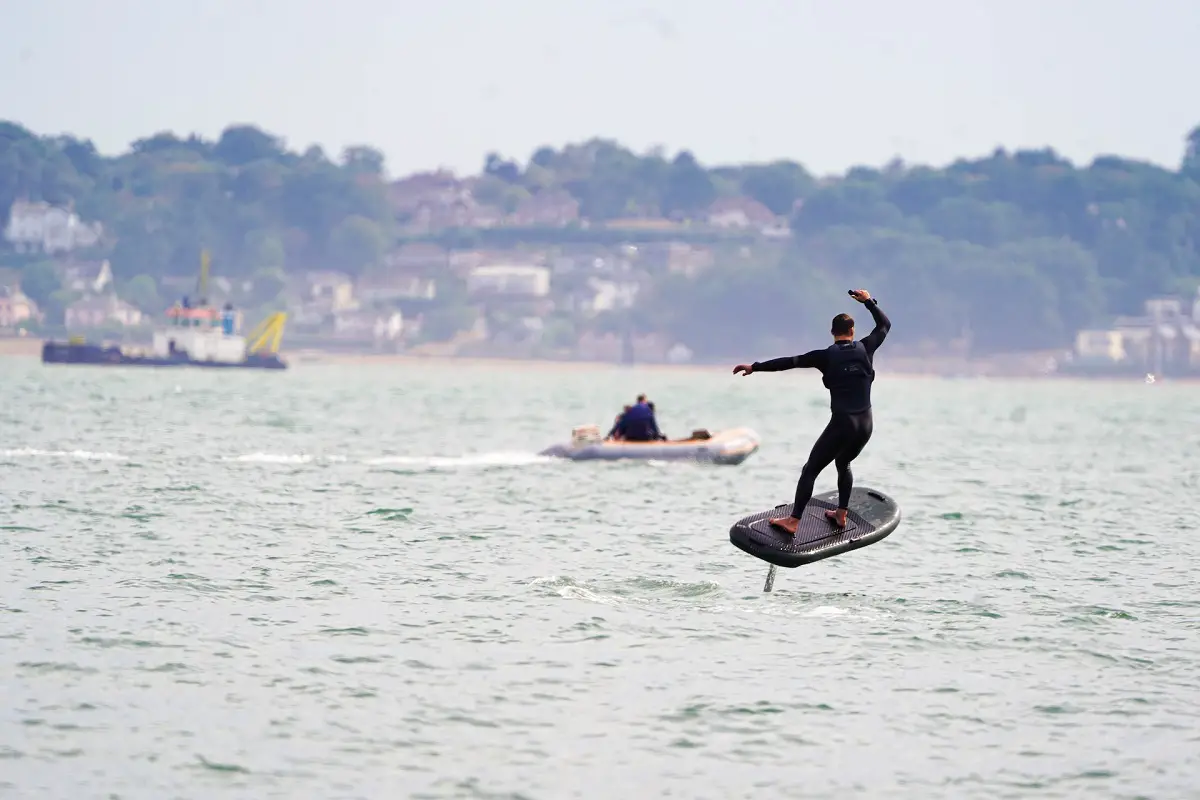
If you’ve used a traditional surfboard before, you may understand a lot of the basics of foil boarding already. But if you’ve never done any of this then you may feel completely left in the dark. That’s okay! We’re going to go over all the steps and advice necessary to learn how to use a hydrofoil electric surfboard properly.
First, you need to figure out where you’re going to use your electric foil surfboard. Not every body of water is equal when it comes to this. It not only needs to be a fun and serviceable location but a safe one as well.
If you’re still learning, you will ideally want to use a spot where there are as few people as possible. No one else at all would be ideal. It means you won’t be crashing into anyone, and it means you won’t have to feel embarrassed should you crash too many times!
Don’t worry if the water in your area doesn’t have a lot of waves. An efoil board can ride anything in the water.
The best way to gain some speed and air is to ride or paddle into any small waves you see and use them to give you some pressure, acceleration, and lift-off.
You could also have someone in a boat or jet ski give you some speed by dragging you along by rope at a comfortable speed. This is a great way for beginners to get a feel for how they should be balanced on an efoil board.
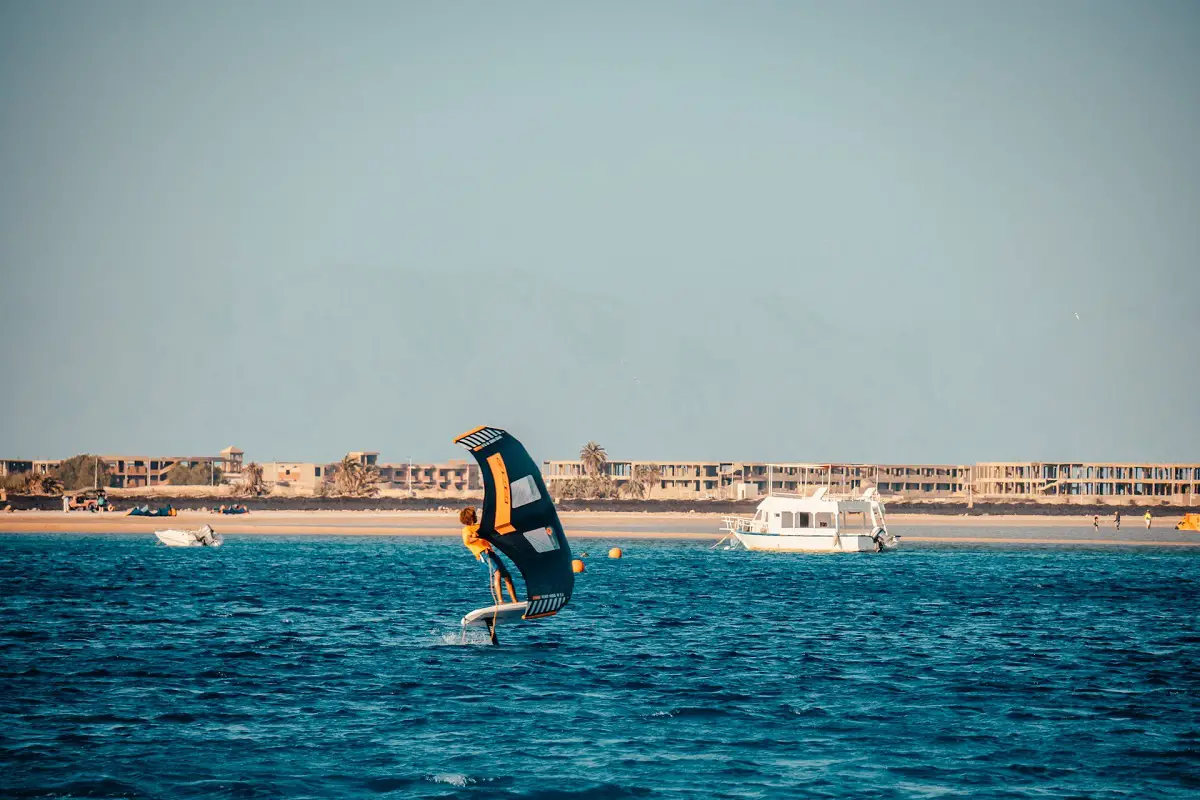
The next thing to keep in mind is thinking about where the hydrofoil should be attached to the surfboard. Yes, this does indeed matter! Where it goes will ultimately depend on your size.
Smaller riders should have the wing placed a little more towards the back. This is because heavier riders will naturally lean forward more and have more of their own weight acting as dispersal.
Next, you need to work on your stance. If you’ve done regular surfing before, you probably already have this figured out.
As a rule of thumb, your back foot should be your right foot. It should be placed just before the mast, but it can be placed right on top of it as well if that’s what you prefer. The front foot should be at least one foot away from the front of the board.
You should also consider having a shoulder-width stance as this will make you have most of your pressure and body weight leaning towards your front foot. This is what you want, as more front pressure means more speed.
Be careful not to lean too much to the front, as back pressure is what gives you more air. Too much front foot pressure and you’ll just sink.
It’s a lot to take in, but as long as you have this info and enough time to practice, you’ll get the hang of efoil surfboarding in no time!
The average efoil lift board will weigh about 50 or 60 pounds. This makes them heavier than the average non-electric counterparts as the motor and battery will add at least 20 pounds.
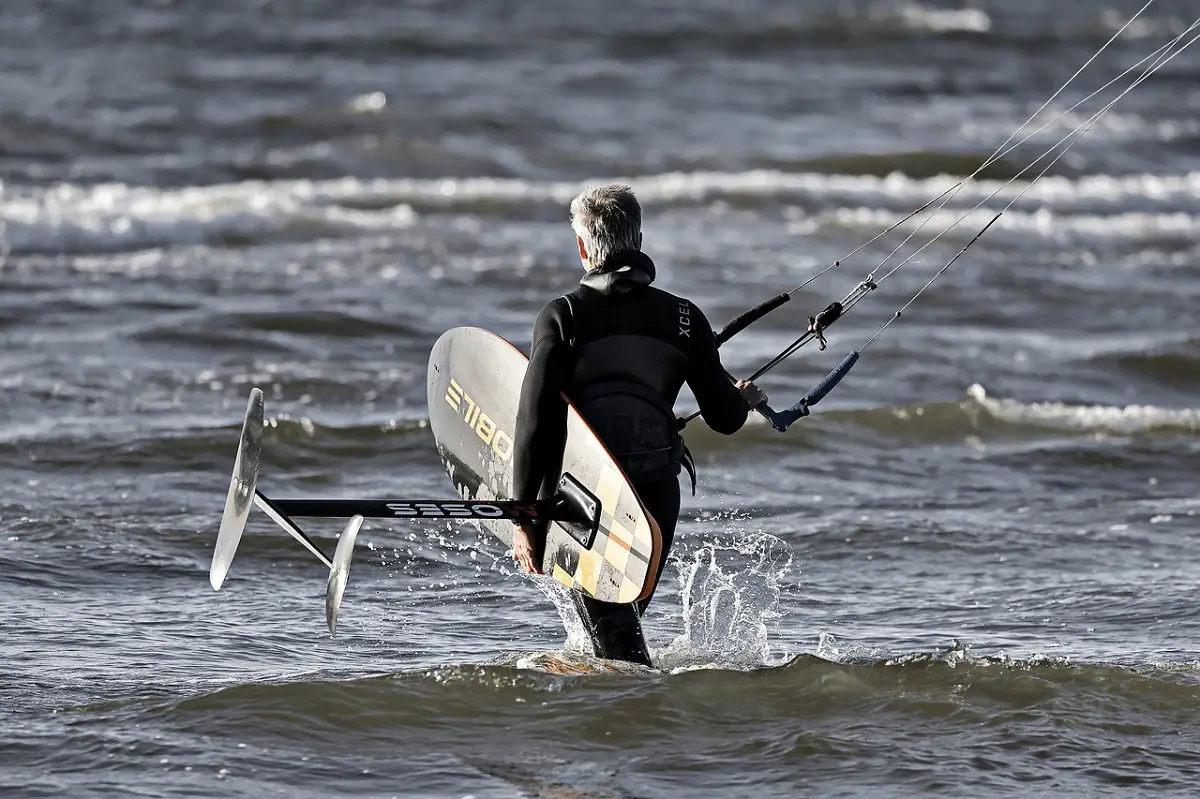
By far the worst thing about efoil surfboards is that they cost ridiculous amounts of money. The cheapest motorized hydrofoil boards out there cost about $5000, and most of them cost at least double that much.
They don’t seem like the most complicated technology on the planet, but unfortunately, there are a few key reasons why the efoil price is so high.
For one thing, demand is not very high, and therefore neither is production. This means that efoil prices need to stay high to counteract the very low supply and demand.
Fortunately, efoiling is becoming more popular so it is only a matter of time before they become cheaper, even if it takes a few more years to see these price reductions happen.
Another more complex reason is that efoil boards are a relatively new technology. This means that they undergo major changes to design trends quite frequently still. This means a lot of research and development, a lot of testing, a lot of replacements, and a lot of new parts and components that need to be ordered and installed.
In other words, all this testing adds to the price from the manufacturer’s end, which drives up the price on the consumer’s end as well. Once efoils leave this experimental stage, they will settle into a more relaxed state and prices will become more relaxed as well.
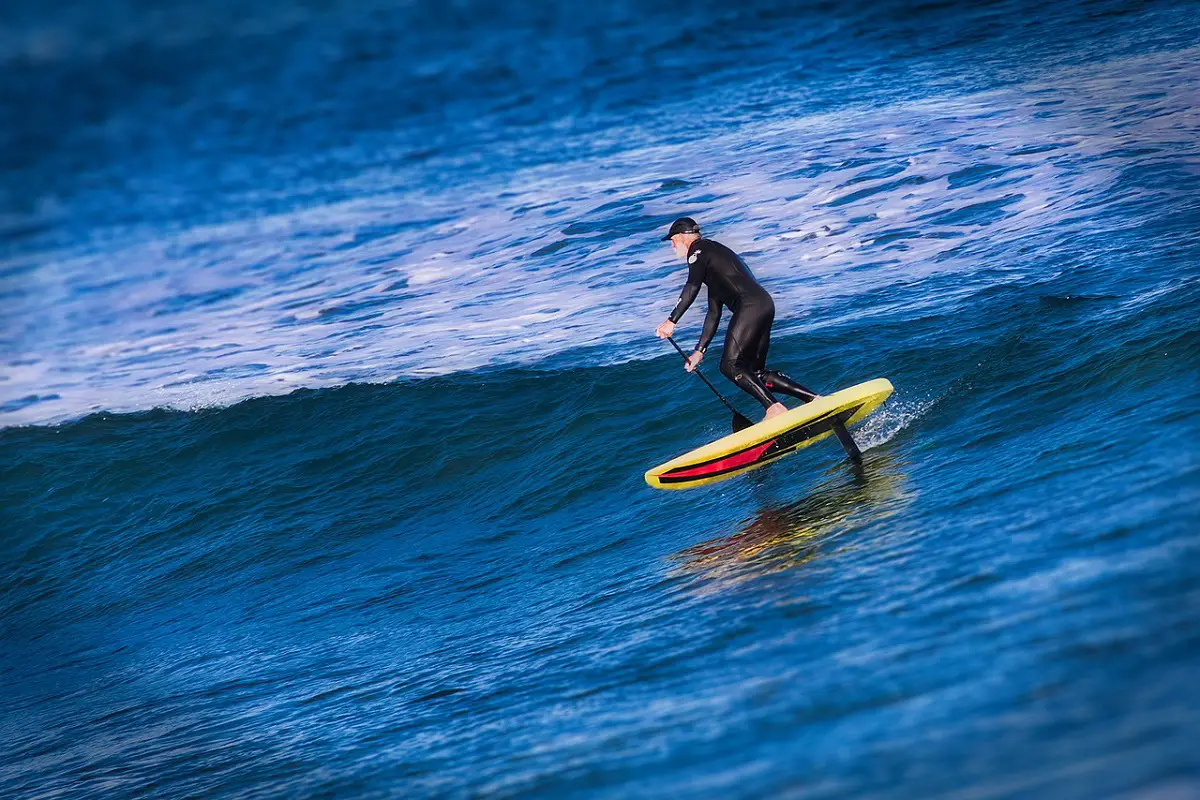
The average battery charge for an efoil surfboard will last about an hour and a half or 90 minutes.
Fortunately, the battery charge time for most efoil units is not very long at all. Many of them will reach a full charge in 2 hours or less.
Most of the batteries installed in powered hydrofoil board units are quality lithium-ion kinds. All efoils are expensive, which comes with the benefit of knowing they are made with high-quality materials, including the battery.
As a result, you can expect the average efoil battery to last as long as a good quality lithium-ion battery would, which is about 5 years. So while efoil surfboards are very pricey, at least you know they will last a very long time before a single component requires replacement.